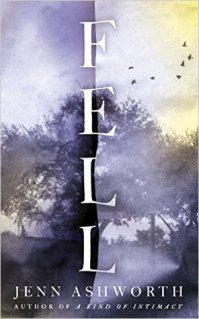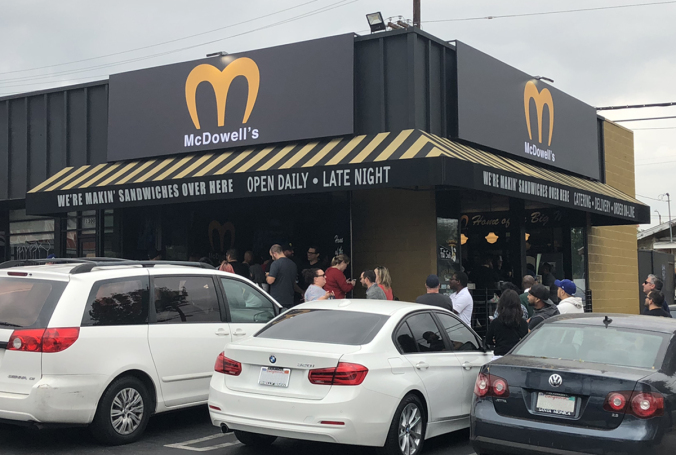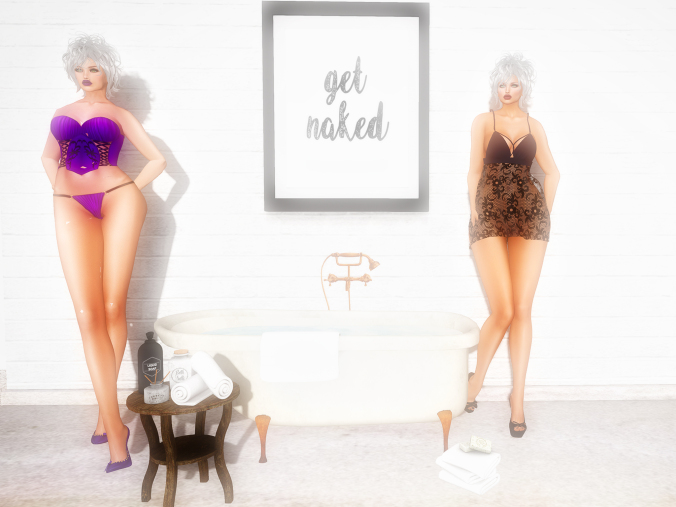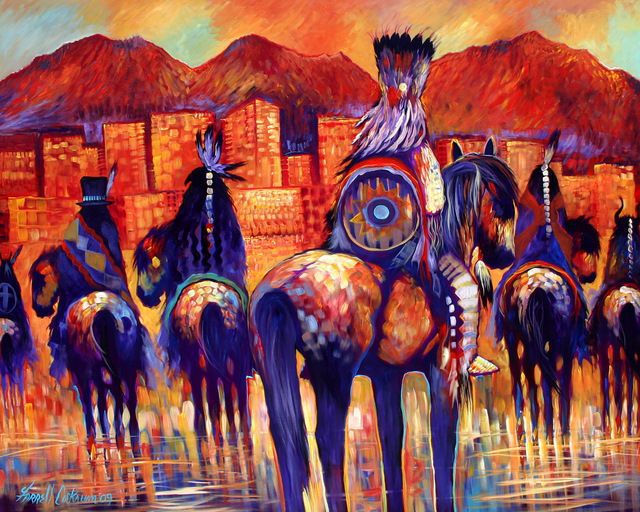
Farrell Cockburn, Blackfoot Artist
The Kikimi of the Painted LandsThe Wind in his Heart is set on a fictional reservation in the American Southwest. A desert people, who dwell in the Painted Lands, the Kikimi have a long complex history. Before the Spaniards and the Americans invaded from the south and the east, the people grew corn, beans, and squash and lived peaceably along the San Pedro River. Forced into the mountains, they became warriors and fought back, until the Women’s Council “saw the futility of battling the endless tide of invaders” and they forged an uneasy and unequal peace. As is the case on some reserves today, a conflict arose between traditionalists intent on preserving culture and those open to cultivating business, like casinos, on the reservation.
In The Wind in his Heart, the protagonists are traditionalists. A conflict arises when Sammy Swift Grass, who manages the casino, guides hunters into the mountains to kill a bighorn sheep. The problem is: the sheep is actually Derek Two Trees, a ma’inawo who happened to be shot while in his animal form. Sammy has his head, ready to give to the hunters for mounting.
Two worlds converge: the contemporary Kikimi world and the mythic otherworld—ghost lands where the spirits and ma’inawo dwell. The otherworld is like Faerie, and as in Faerie, humans who venture there are changed. Aging halts. In the otherworld, past, present, and future occur simultaneously.
Time moves differently on the other side. The otherworld is actually an onion of worlds, each skin peeling back a different layer to reveal yet another world. In some places, years pass in what are only minutes here. In others, a few days can be a decade.
The ma’inawo are magical beings who can appear in either human or animal form or as both together. Naturally, the traditionalists, many of whom are ma’inawo themselves, want to avenge the murder of Derek and other ma’inawo.
“Derek Two Trees wasn’t the first to die at the hands of Sammy Swift Grass and his hunters…The kin of other victims have been speaking to the wind, asking for justice,” says Abigail White Feather (Aggie). Like other characters in this story, Aggie moves between worlds. She appears to be in her eighties, but was born before the Europeans invaded the Painted Lands. Aggie is an elder, a wise woman, and an artist. She paints the ma’inawo as she sees them. “Weird animal-human hybrids” like Calico, the foxalope. Sometimes, Calico sprouts horns; other times, she wears the face of fox, and still other times; she is a beautiful red-haired woman. Similarly, Aggie’s red dog, Ruby, shifts between being a dog and a woman.

John Nieto
In New Mexico, I fell in love with Indigenous art. I was sure I’d seen a painting similar to what Charles de Lint describes as Aggie’s ma’inawo art.

Susan Seddon Boulet, Chaco Canyon
For many years, I had one of Susan Seddon Boulet’s prints of a Hawk Woman. Seddon Boulet is an English artist, born in Brazil. She’s been creating mythical art since the 1980s where humans and animals merge in a shamanistic way.
But, I was sure I’d seen some Native American artists in New Mexico galleries who crossed the borders between human and spirit. In my online search, I discovered some truly amazing pieces, though I didn’t turn up any of Aggie’s paintings.
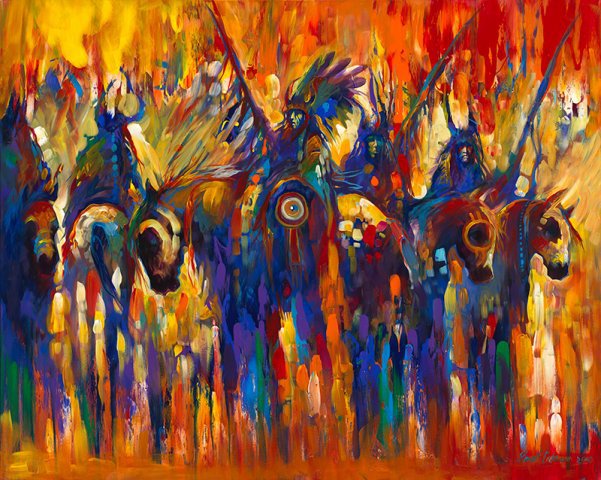
Farrell Cockburn, Blackfoot Artist

Adee Dodge Gouache, Navajo Artist
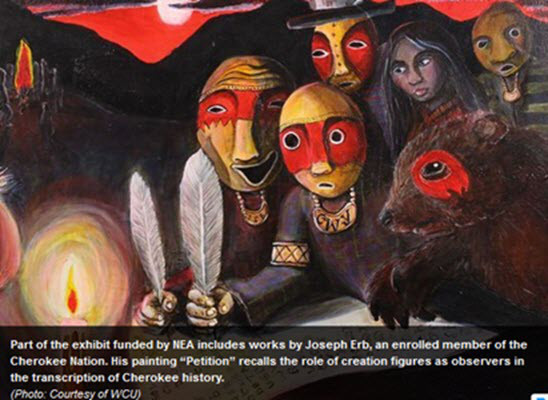
Like the otherworld, de Lint’s story is multi-layered. After a second reading, I’m still sorting through all the complexities, and the story has found its way into my consciousness.
Kikimi shaman, Ramon Morago says, “My medicine speaks to the spirit. It teaches the spirit how to heal itself.”
The Wind in his Heart also speaks to the spirit. It holds its own medicine. Casts its own spell. Charles de Lint’s characters find healing in different ways. One by staying in the Painted Lands. Another by leaving. Still another, by receiving kindness and acceptance from the people she encounters no matter what she does to drive them away. This novel is about healing.
After viewing many Native American prints this morning, I fell asleep in front of the fire, something I never do. And I dreamed. First, I am sure I was at one of the joyful gatherings on the Kikimi rez. And then, I was riding in a jeep in the open air. And I was happy. The sign on the side of the road read, Labrador. I smile as I write this. My first thought was: drive across the country from the West Coast to the East Coast and back again.
But those of you who know me, will remember that I am currently raising a beautiful yellow Labrador puppy who has stolen my heart. No matter if it’s the land or the lab what I can truly say is this: Labrador=Happy=The Wind in her Heart.
Share this:
